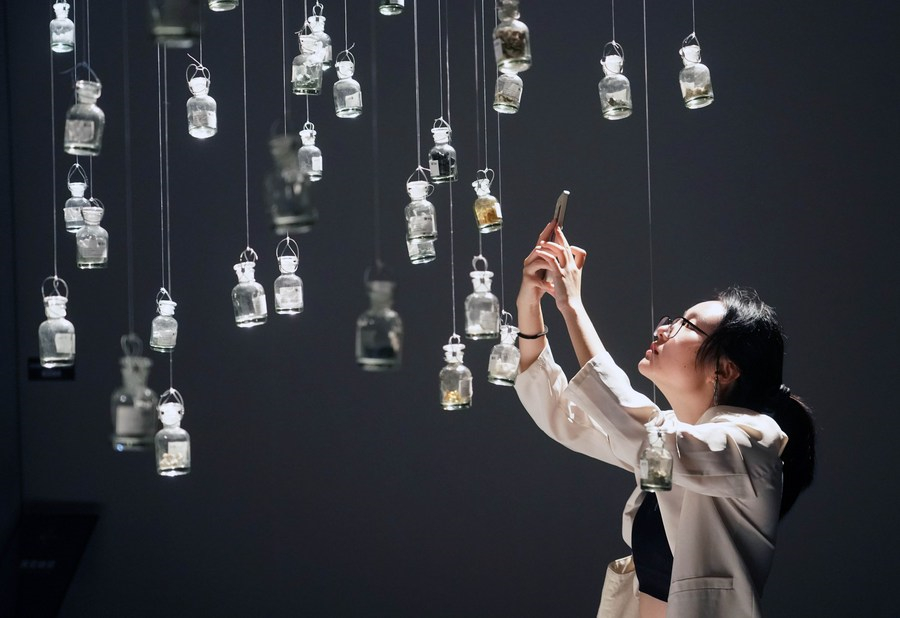Culture, museum craze drives consumption during China's eight-day holiday

A visitor takes pictures at a science and art exhibition at the Beijing Times Art Museum in Beijing, capital of China, Oct. 2, 2023. [Xinhua/Ren Chao]
BEIJING -- As athletes competed in the Hangzhou Asian Games, which concluded on Sunday, a sports museum in Beijing took visitors on a journey through time, aided by a curated display of medals, badges, boarding passes, commemorative porcelain and vintage photographs.
The carefully arranged artifacts in the Beijing Xiang Sports Museum seemed to beckon visitors to relive moments from decades and even centuries past. They narrated the rich historical tapestry of China, the Asian Games, and the world of Olympic sports, leaving a lasting impression on tourists who were fortunate enough to enjoy the journey.
"Prior to the Mid-Autumn Festival on Sept. 29, our museum unveiled 10 new exhibitions in Beijing and Hangzhou centered around sports and Olympic themes," said Li Xiang, the museum's curator.
The Hangzhou Asian Games coincided with this year's eight-day Mid-Autumn and National Day holiday, which ended Friday. During the period, several museums and cultural institutions across the country put on events centered on themes such as reunion, patriotism and sports. They unveiled innovative activities that blended performance, digital technology and immersive experiences, sparking a surge in consumer engagement and enthusiasm.
According to data from the Beijing Municipal Cultural Heritage Bureau, as of Friday, the city's museums had welcomed approximately 2.206 million visitors, with an average daily attendance of 276,000 people. This represents a 93 percent increase compared to the same period in 2022.
The city also witnessed extensive renovations of cultural sites, museums and leisure areas, resulting in their improved appearance and offering more aesthetically pleasing urban spaces for tourism.
During the holiday, medium and long-distance tourism grew significantly, with cultural and museum venues emerging as popular choices among visitors, together with participation in related activities.
"Our museum's parent-child research tours continued to enjoy great popularity during the period," said Chen Tao, who works at a Beijing-based tourism company specializing in parent-child travel. "Notably, the majority of tourists hailed from families residing outside Beijing, constituting over 80 percent of our visitors."
To cater to the demands of nighttime visitors, several museums in Beijing extended their opening hours during the holiday and hosted distinctive evening events.
In Shougang Park, an exhibition showcased digitally rendered cultural relics, immersing visitors in an experience akin to being among the Terracotta Warriors, garnering a warm reception from tourists.
Leveraging the exhibition's content, the digital creativity center also introduced a diverse range of cultural and tourism products, bringing an 80 percent year-on-year increase in its attendance figures.
He Yan, an expert from the Chinese National Committee for the International Council on Monuments and Sites, said that the spike in public interest in culture and museums has been steadily intensifying since the start of the year. More tourists are now selecting museums and other cultural destinations as their primary travel spots.
"We observe that the cultural and museum venues are emerging as novel gateways for cultural tourism, which has been significantly fueling the growth of industries such as transportation, commerce, dining and accommodation," He said.
























